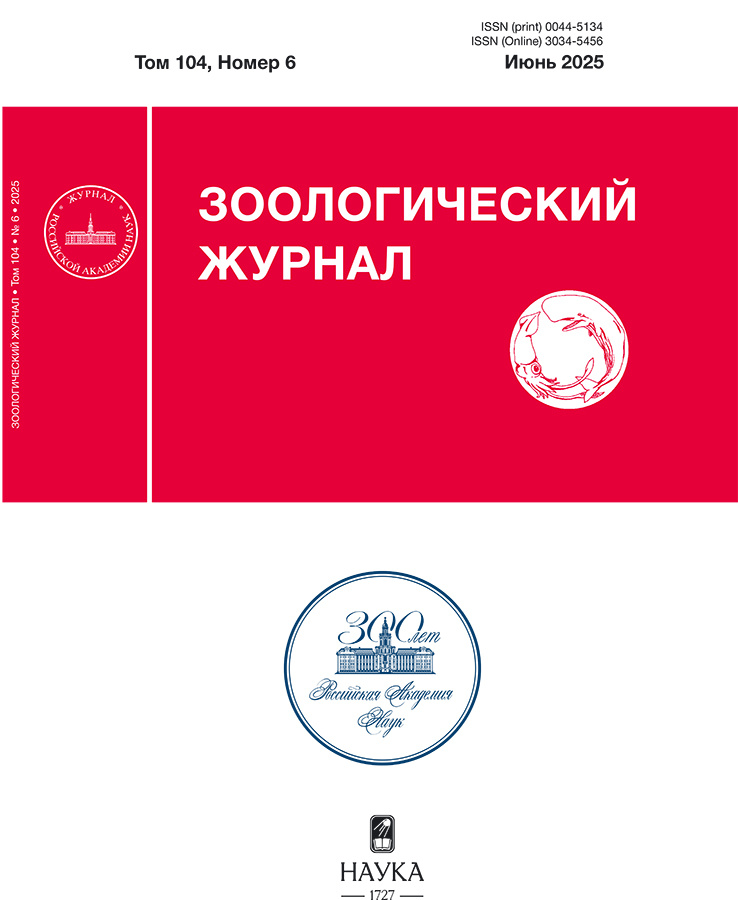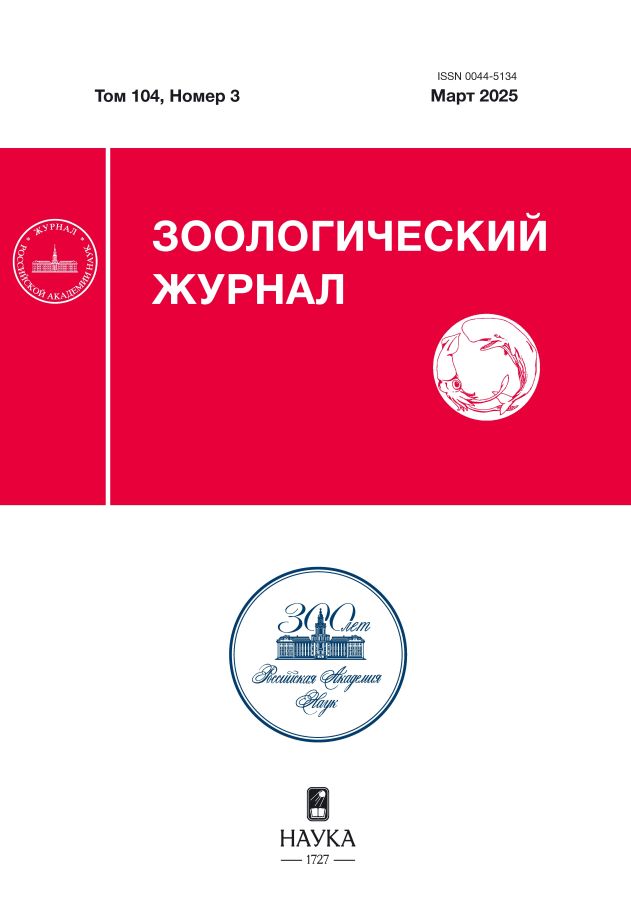Reproductive characteristics of the zokors (Myospalax, Rodentia, Spalacidae) in eastern Russia
- Authors: Bazhenov Y.A.1, Pavlenko M.V.2
-
Affiliations:
- Institute of Natural Resources, Ecology and Cryology, Siberian Branch, Russian Academy of Sciences
- Federal Scientific Center of East Asia Terrestrial Biodiversity, Far Eastern Branch, Russian Academy of Sciences
- Issue: Vol 104, No 3 (2025)
- Pages: 100-111
- Section: ARTICLES
- URL: https://permmedjournal.ru/0044-5134/article/view/679403
- DOI: https://doi.org/10.31857/S0044513425030086
- EDN: https://elibrary.ru/acqbzj
- ID: 679403
Cite item
Abstract
Original data on the dates of rutting, the birth of cubs, the dispersal of the young, and the brood size of zokors, Myospalax aspalax and M. armandii in Transbaikalia, and M. psilurus both in Transbaikalia and the Primorsky krai are presented. The available literature data on the reproduction of the members of the subfamily Myospalacinae from China, Russia and Kazakhstan are analysed and compared with data on the Myospalacinae from eastern Russia. The lowest fertility is shown to be characteristic of M. armandii in Transbaikalia and a generally low fertility – of the species from eastern Russia in comparison with M. myospalax distributed in western Siberia. Many features such as a small brood size (from 1.75 in M. armandii to 4.67 in M. myospalax in Kazakhstan), the seasonal spring reproduction once a year, a solitary lifestyle even during the rutting, the prolonged breeding, the dispersal of the young, and the predominance of females among adults are characteristic of all study species of both genera of the family, Myospalax and Eospalax.
Full Text
About the authors
Yu. A. Bazhenov
Institute of Natural Resources, Ecology and Cryology, Siberian Branch, Russian Academy of Sciences
Author for correspondence.
Email: theriologistyury@gmail.com
Russian Federation, Chita, 672014
M. V. Pavlenko
Federal Scientific Center of East Asia Terrestrial Biodiversity, Far Eastern Branch, Russian Academy of Sciences
Email: mv_pavlenko@mail.ru
Russian Federation, Vladivostok, 690022
References
- Баженов Ю.А., 2016. Некоторые особенности биологии даурского цокора (Myospalax aspalax, Rodentia, Spalacidae) восточного Забайкалья // Зоологический журнал. Т. 95. № 4. С. 458–464. doi: 10.7868/S0044513416020069
- Баженов Ю.А., Павленко М.В., 2020. Распространение цокоров (Myospalax, Rodentia) в Забайкалье // Зоологический журнал. Т. 99. № 6. С. 706–715.
- Громов В.С., 2008. Пространственно-этологическая структура популяций грызунов. М.: Товарищество научных изданий КМК. 581 с.
- Кораблев В.П., Павленко М.В., 2007. Генетические характеристики и географическое распространение цокоров Myospalax в Забайкалье // Природоохранное сотрудничество Читинской области и Автономного района Внутренняя Монголия в трансграничных экологических регионах. Материалы Международной конференции. Чита. С. 188–190.
- Костенко В.А., 1970. Северокитайский цокор в Приморском крае // Мелкие млекопитающие Приамурья и Приморья. Владивосток. С. 170–175.
- Костенко В.А., 2000. Грызуны (Rodentia) Дальнего Востока России. Владивосток: Дальнаука. 210 с.
- Красная книга Российской Федерации, том “Животные”. 2-е издание. 2021. М.: ФГБУ “ВНИИ Экология”. 1128 с.
- Махмутов С.М., 1978. Алтайский, или обыкновенный цокор – Myospalax myospalax Laxmann, 1773 // Млекопитающие Казахстана. Т. 1. Ч. 3. Алма-Ата: “Наука” Каз. ССР. С. 424–448.
- Махмутов С.М., Спивакова Л.В., Янцен А.А., 1973. Размножение алтайского цокора в Восточном Казахстане // Труды Института зоологии Каз. ССР. С. 181–199.
- Некипелов Н.В., 1946. Сведения о биологии даурского цокора Myospalax dybowskii Tschersky // Бюллетень московского общества испытателей природы. Отдел биологический. Т. 51. № 4–5. С. 71–78.
- Павленко М.В., Кораблев В.П., Цвирка М.В., 2014. Генетическая дифференциация, и систематика цокоров востока России: сравнение периферических популяций маньчжурского цокора (Myospalax psilurus, Rodentia, Spalacidae) // Зоологический журнал. Т. 93. № 7. С. 906–916. https://doi.org/10.7868/S0044513414070137
- Павленко М.В., Цвирка М.В., Кораблев В.П., Пузаченко А.Ю., 2014а. Распространение цокоров (Rodentia, Spalacidae, Myospalacinae) на востоке России по результатам генетического и морфологического анализов // Ареалы, миграции и другие перемещения диких животных: Материалы Международной научно-практической конференции. Владивосток. C. 224–231.
- Павлинов И.Я., 2012. Семейство Myospalacidae. Млекопитающие России: систематико-географический справочник (Сборник трудов Зоологического музея МГУ. Т. 52). Ред.: Павлинов И.Я., Лисовский А.А. М.: Товарищество научных изданий КМК. С. 313– 382.
- Плятер-Плохоцкий К.А., 1936. Вредные и полезные млекопитающие в сельском хозяйстве ДВ края. 2-е изд. Хабаровск: Дальгиз. 158 с.
- Потапкина А.Ф., 1970. О биологии цокора (Myospalax myospalax Laxmann) в Центральном Алтае // Фауна Сибири. Новосибирск: Наука. С. 287–288.
- Пузаченко А.Ю., Павленко М.В., Кораблев В.П., 2009. Морфометрическая изменчивость черепа цокоров (Rodentia, Myospalacidae) // Зоологический журнал. Т. 88. № 1. С. 92–112.
- Скалон В.Н., 1946. Наблюдения за образом жизни даурского цокора в Монголии // Ученые записки Монгольского университета. Т. 1. № 1. С. 76–80.
- Скалон В.Н., Некипелов Н.В., 1936. К познанию биологии манчжурского цокора // Известия Иркутского государственного научно-исследовательского противочумного института. С. 48–60.
- Цвирка М.В., Павленко М.В., Кораблев В.П., 2011. Генетическое разнообразие и филогенетические отношения в подсемействе цокоров Myospalacinae (Rodentia, Muridae) по результатам RAPD-PCR анализа // Генетика. Т. 47. № 2. С. 231–242.
- Шубин Н.Г., Ердаков Л.Н., 1967. Об экологии алтайского цокора // Экология млекопитающих и птиц. М. С. 101–111.
- China’s Red List of Biodiversity: Vertebrates, Volume 1: Mammals, 2021. Eds: Zhigang Jiang et al. Science Press. 1588 p.
- Fu H.‐P., Yuan S., Man D.‐H., Chai X.-X., Yang S.-W., et al., 2018. The burrow behavior and influenced factors of a prairie subterranean zokor (Myospalax psilurus) // Ecology and Evolution. V. 8. № 24. P. 12773– 12779. https://doi.org/10.1002/ece3.4705
- Liu X., Zhang S., Cai Z., Kuang Z., Wan N., et al., 2022. Genomic insights into zokors’ phylogeny and speciation in China // Proceedings of the National Academy of Sciences of the United States of America V. 119. № 19. https://doi.org/10.1073/pnas.2121819119
- Luo Z.X., Cheng W., Gao W., 2000. Fauna sinica: Mammalia. V. 6. Rodentia, Part III: Cricetidae. Beijing: Science Press. 514 p.
- Norris R.W., 2017. Family Spalacidae (Muroid Mole-rats) / Handbook of the Mammals of the World. V. 7. Rodents II. Eds: Wilson D.E., Lacher T.E., Mittermeier Jr. and R.A. Barcelona: Lynx Edicions. P. 108–142.
- Norris R.W., Zhou K.Y., Zhou C.Q., Yang G., Kilpatrick C.W., Honeycutt R.L., 2004. The phylogenetic position of the zokor (Myospalacinae) and comments on the families of muroids (Rodentia) // Molecular Phylogenetics and Evolution. V. 31. № 3. P. 972–978.
- Puzachenko A.Y., Pavlenko M.V., Korablev V.P., Tsvirka M.V., 2014. Karyotype, genetic and morphological variability in North China zokor Myospalax psilurus (Rodentia, Spalacidae, Myospalacinae) // Russian Journal of Theriology. V. 13. № 1. P. 27–46. https://doi.org/10.15298/rusjtheriol.13.1.04
- Smith A.T., Xie Y., 2013. Mammals of China. Princeton: Oxford: Princeton University Press. 393 p.
- Wang Q.Y., Fan N.C., 1987. Studies on the digging activities and exploration about the method of number estimation of Plateau zokor // Acta Theriologica Sinica. V. 7. P. 283–290.
- Wang Q., Zhang Y., Wei W., Bian J., 2000a. Food habit of the Plateau zokor // Acta Theriologica Sinica. V. 20. P. 193–199.
- Wang Q.Y., Zhou W.Y., Wei W.H., Zhang Y.M., Fan N.C., 2000b. The burrowing behavior of Myospalax baileyi and its Relation to soil hardness // Acta Theriologica Sinica. V. 20 (4). P. 277–283.
- Wang T.Z., Li X., 1993. Study on reproductive characteristics of Gansu zokor and Chinese zokor // Acta Theriologica Sinica. V. 13. № 2. P. 153–155.
- Wang T., Xiong Y., Ge J., Wang S., Li Y., et al., 2008. Four-year dynamic of vegetation on mounds created by zokors (Myospalax baileyi) in a subalpine meadow of the Qinghai–Tibet Plateau // Journal of Arid Environments. V. 72. P. 84–96. https://doi.org/10.1016/j.jaridenv.2007.05.002
- Wilson D.E., Reeder D.M. (eds), 2005. Mammal species of the world: a taxonomic and geographic reference. 3rd edition. Baltimore, Maryland: Johns Hopkins University Press. 2142 p.
- Xie J.X., Lin G.H., Liu C.X., Yang C.-H., Deng X.G., et al., 2014. Diet selection in overwinter caches of Plateau zokor (Eospalax baileyi) // Acta Theriologica. V. 59. P. 337–345. https://doi.org/10.1007/s13364-013-0168-3
- Zhang T., Lei M., Zhou H., Chen Zh., Shi P., 2022. Phylogenetic relationships of the zokor genus Eospalax (Mammalia, Rodentia, Spalacidae) inferred from whole-genome analyses, with description of a new species endemic to Hengduan Mountains // Zoological Research. V. 43 № 3. P. 331–342. https://doi.org/10.24272/j.issn.2095-8137.2022.045
- Zhang Y., Jin S., Quan G., Li S., Ye Z., et al., 1997. Distribution of Mammalian Species in China. Beijing: China Forestry Publishing House. 280 p.
- Zhang Y., Liu J., 2003. Effects of Plateau zokor (Myospalax fontanierii) on plant community and soil in an alpine meadow // Journal of Mammalogy. V. 84. P. 644–651.
- Zhang Ya., Zhang Zh., Liu J., 2003. Burrowing rodents as ecosystem engineers: the ecology and management of Plateau zokors Myospalax fontanierii in alpine meadow ecosystems on the Tibetan Plateau // Mammal review. V. 33. № 3–4. P. 284–294. https://doi.org/10.1046/j.1365-2907.2003.00020.x
- Zhang Ya., 2007. The Biology and Ecology of Plateau Zokors (Eospalax fontanierii) // Subterranean Rodents: News from Underground. Berlin–Heidelberg: Springer-Verlag. P. 237–259.
- Zheng S., 1980. Studies on the reproduction in the Mole rat (Myospalax fontanieri) // Acta Zoologica Sinica. V. 1. P. 465–477.
- Zhou J., Ji C., Dong K., Chu B., Wang L., Hua L., 2022. Dynamic changes in the home range of the subterranean rodent Myospalax baileyi // Frontiers in Ecology and Evolution. V. 10. https://doi.org/10.3389/fevo.2022.1041322
- Zhou W., Dou F., 1990. Studies on activity and home range of Plateau zokor // Acta Theriologica Sinica. V. 10. P. 31–39
Supplementary files













